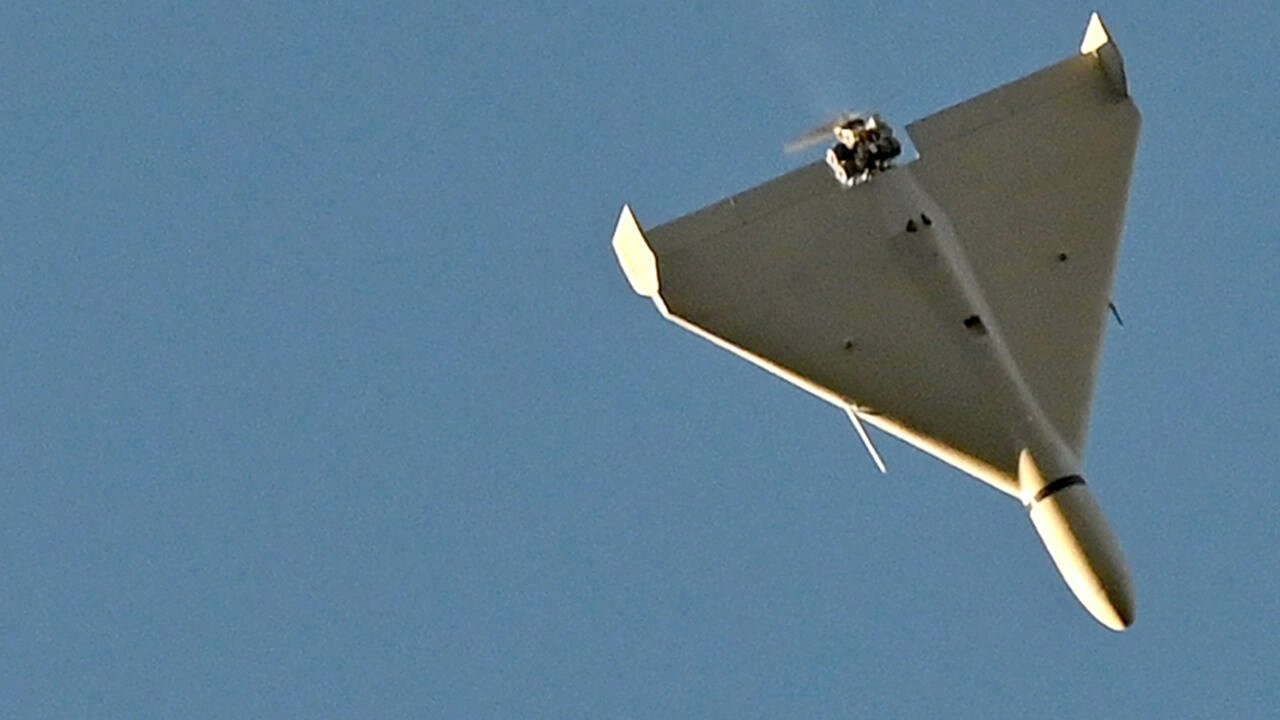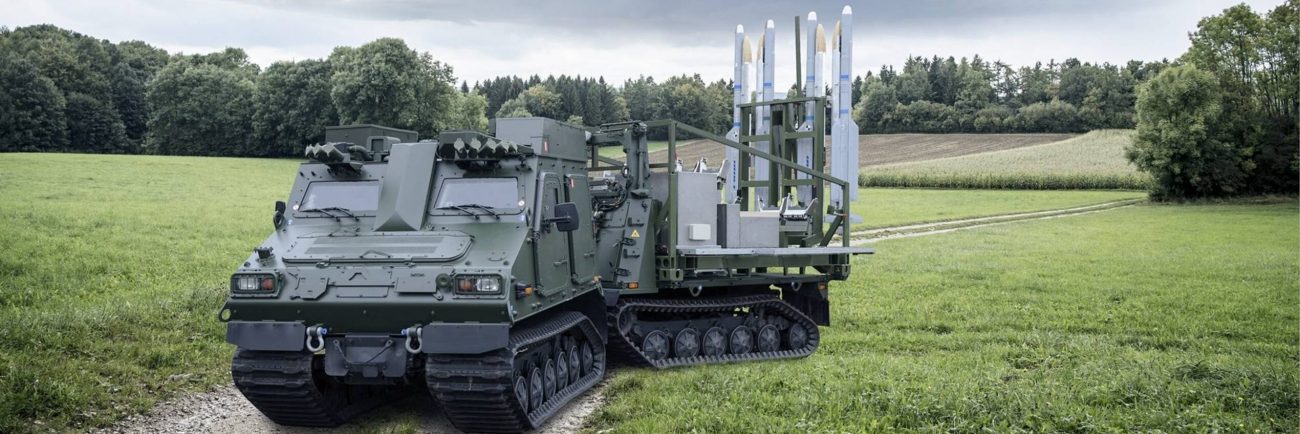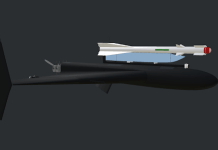The Iranian-made Shahed-136, also called the ‘Geran-2’ or ‘Geranium-2 in Russia’, has emerged as a formidable weapon system in the ongoing Russia-Ukraine war.
A netizen sympathetic to Russia posted an image of a Geran-2 with a hole in its right wing. In the image, the drone appears to be diving toward its target to eventually detonate upon reaching it.
The size of the hole in the image suggests the drone might have taken a hit from an anti-aircraft gun, most probably a 35mm round of the German-made Gepard anti-aircraft gun.
As reported earlier by EurAsian Times, the Gepard guns have proven themselves effective against Iranian-made Shahed-136 kamikaze drones. They are being used extensively to engage suicide drones before they can inflict damage on the ground.

Nevertheless, this particular Geran-2 seems to have remained unaffected despite taking a hit, and it probably reached its target successfully and might have inflicted severe damage after detonating.
“Mr. Geran doesn’t care. He’ll finish the job even with a hole in his wing,” said ‘Russians With Attitude,’ the Twitter handle that shared the image of the Geran-2 drone.
Russia Evolving Tactics To Employ Kamikaze Drones
According to Ukrainian officials, Russian forces have been evolving their tactics to use the kamikaze drones supplied by Iran effectively.
Since September, Russia’s military has been using Iranian-made Shahed drones to strike Ukrainian targets.
Initially, the Russian forces began swarm attacks using multiple Shahed-136 kamikaze drones at once, in batches of five and more, to overwhelm Ukrainian air defenses. Russian forces reportedly used 12 drones for a single swarm attack in one instance.
As per some reports, the Russian forces were also launching the kamikaze drones in pairs, with one flying above the other, either as a backup if the lower one is shot down, or if the lower drone is successful, the second one can be directed toward a different target.
Since early October, Russian strategy has been to fill the Ukrainian skies with a salvo of missiles and a limited number of drones to overwhelm the Ukrainian air defense systems to destroy Ukraine’s energy grid and critical infrastructure as the winter sets in.
Shahed-136 drones hit the Ladyzhinskaya Thermal power plant. Critical areas were hit. pic.twitter.com/TkxCQnO8a0
— LogKa (@LogKa11) October 11, 2022
However, shortly after that, the Russian military appears to have reduced its use of Iranian-made kamikaze drones, ultimately putting a complete halt to it, with the last recorded downing of Shahed-136s on November 17, 2022.
Ukrainian military officials said that the Russian military stopped launching these drones because they cannot operate in winter.
Whereas other reports suggested the halt in using kamikaze drones was temporary because Russia had depleted its supply of unmanned aerial vehicles (UAVs) made in Iran, and it would probably acquire more.
Whatever may have been the reason, Russia did resume its use of kamikaze drones from early December onward, with Yuriy Ihnat, a Ukrainian Air Force Command spokesperson, announcing on December 7 that Russian forces had started using the loitering munitions after a gap of three weeks.
However, of late, drone launches have not been very frequent if the assertions by Ukrainian officials are to be believed.

The media office of Ukraine’s Southern Defense Forces has said that Russians have now adopted a novel approach of deploying these kamikaze drones in waves.
“The fact that they do not use them as often as the drones from the previous batch, as we observed, indicates a certain change in the tactics of their actions,” said Natalya Gumenyuk, the head of the Joint Coordinating Press Center of the Southern Defense Forces, when asked how often the Russian military is launching kamikaze drones in the south.
“They are trying to use them to detect air defenses – the first wave is aimed at this, and then the next wave is a shock wave. We figured this out from their previous attacks on our air defense and energy systems, “Gumenyuk explained.
The New Russian Tactics Could Mean More Trouble For Ukrainian Air Defense
The latest remarks by Gumenyuk suggest Russian tactics for these kamikaze drones have refined over the period. This could be even more pernicious for Ukraine’s air defense systems and the overall security of Ukraine’s military and civilian infrastructure.
As EurAsian Times explained earlier, Ukraine is already spending significantly more money on countering the threat from Shahed-136 kamikaze drones fired at its cities than Russia spends on acquiring and launching these Iranian-made drones.
In almost every large-scale drone attack by Russia, Ukrainian forces have claimed an impressive number of shoot downs, mostly above 60%, and in some instances, even above 80%.
To intercept these drones, Ukraine has been using its own Soviet-era air defense systems like S-300 surface-to-air missiles, which have already been depleting at faster rates, and the expensive West-supplied systems like IRIS-T and NASAMS, etc.

These surface-to-air missile systems are critical for Ukraine to deny its airspace to advanced Russian fighter aircraft, but instead, they are being used up in huge numbers to counter cheap Iranian-made kamikaze drones.
For example, an average Shahed drone costs around $20,000, while an IRIS-T missile costs about $430,000, which is 20 times more than the cost of the Iranian-made kamikaze drone.
Ukraine is said to have spent around $28.14 million, from September 13 to October 17, on defense against these kamikaze drones, according to an estimate by military analysts at the NGO Molfar, based on open-source data of kamikaze drone launches by Russia.
Whereas for Russia, the cost of drone attacks on Ukraine for the same period is estimated by military analysts at the NGO Molfar to be around $11.66-17.9 million.
What is important to note here is that for Russia, these kamikaze drones offer an expendable and cost-effective alternative to expensive aircraft and cruise and ballistic missiles. Even if they are shot down, they still deplete Ukraine’s already diminishing stockpile of surface-to-air missiles, as discussed previously by EurAsian Times.
Also, these kamikaze drones are supposed to be destroyed in their missions; therefore, their shoot-downs do not represent a loss for the Russian military, which is launching them for a one-way mission.
- Contact the author at tanmaykadam700@gmail.com
- Follow EurAsian Times on Google News




